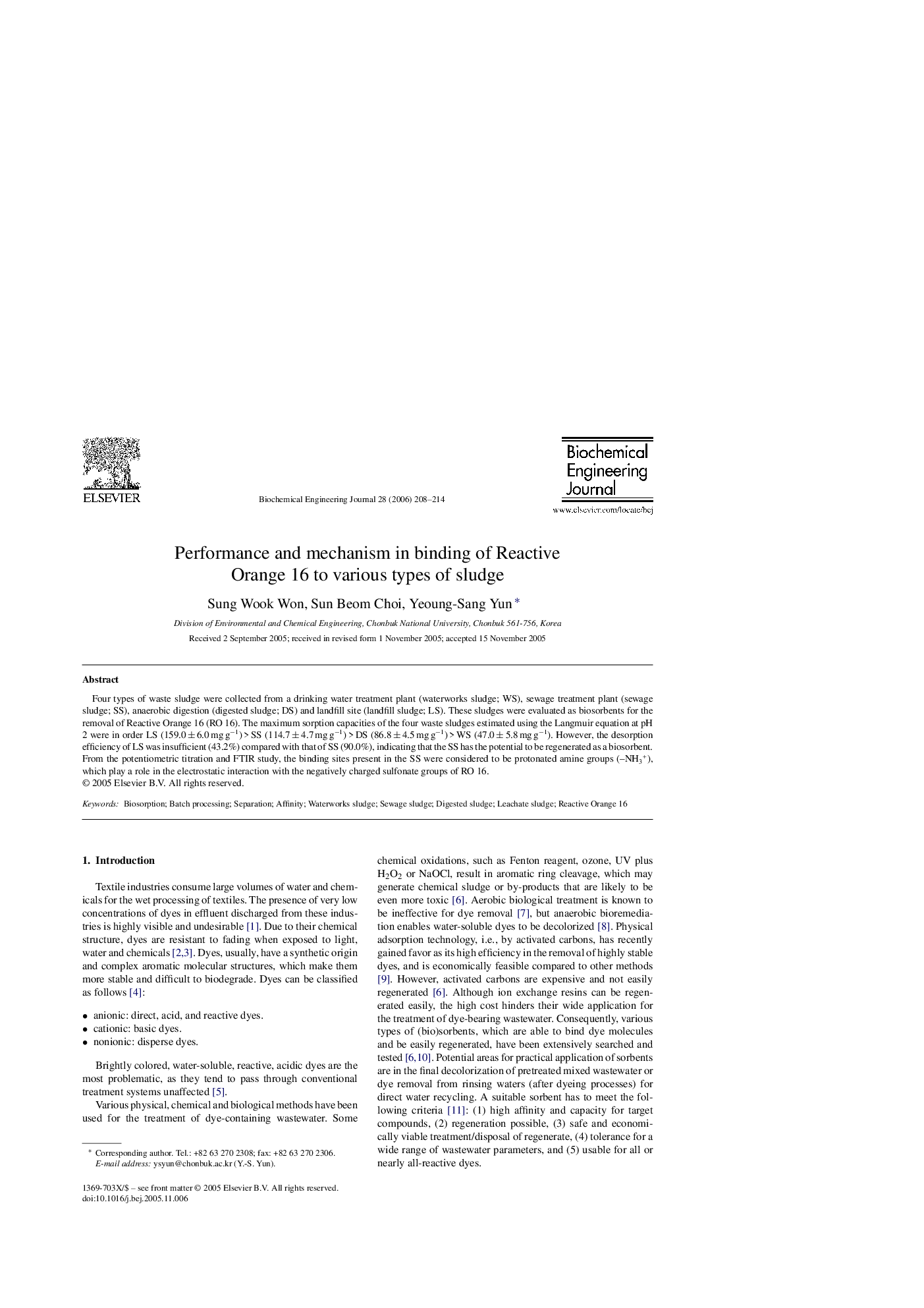| Article ID | Journal | Published Year | Pages | File Type |
|---|---|---|---|---|
| 4838 | Biochemical Engineering Journal | 2006 | 7 Pages |
Four types of waste sludge were collected from a drinking water treatment plant (waterworks sludge; WS), sewage treatment plant (sewage sludge; SS), anaerobic digestion (digested sludge; DS) and landfill site (landfill sludge; LS). These sludges were evaluated as biosorbents for the removal of Reactive Orange 16 (RO 16). The maximum sorption capacities of the four waste sludges estimated using the Langmuir equation at pH 2 were in order LS (159.0 ± 6.0 mg g−1) > SS (114.7 ± 4.7 mg g−1) > DS (86.8 ± 4.5 mg g−1) > WS (47.0 ± 5.8 mg g−1). However, the desorption efficiency of LS was insufficient (43.2%) compared with that of SS (90.0%), indicating that the SS has the potential to be regenerated as a biosorbent. From the potentiometric titration and FTIR study, the binding sites present in the SS were considered to be protonated amine groups (–NH3+), which play a role in the electrostatic interaction with the negatively charged sulfonate groups of RO 16.
